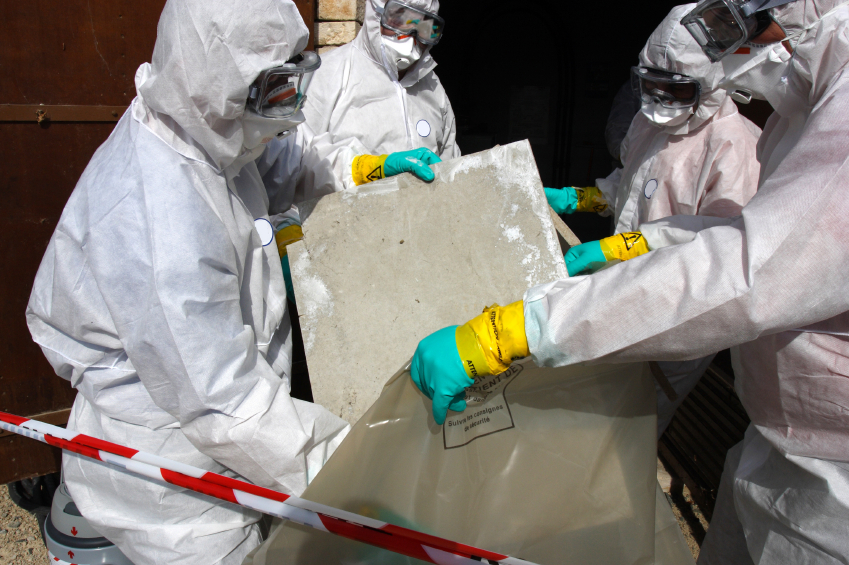In today’s Advisor, we will review two types of training requirements for operations and maintenance (O&M) workers who are involved with asbestos-containing material (ACM) not related to demolition and renovation projects.
 |
Note: The Occupational Safety and Health Administration (OSHA) industry standards for asbestos do not protect certain state and local government employees. The worker protection requirements under the Toxic Substances Control Act (TSCA) ensure that the OSHA General Industry and Construction Industry Standards under 29 CFR 1910.1001 and 29 CFR 1926.1101 are applied to such employees, including those performing asbestos-related work in schools.
O&M Training for Asbestos
The U.S. Environmental Protection Agency’s (EPA) regulations for asbestos training were written specifically for managing asbestos in schools. However, the Agency highly recommends all building owners and operators use the regulations when determining how best to manage on-site, in-place ACM.
Note: ACM is any material that contains more than 1% asbestos.
Specifically, for training for O&M workers not involved in major renovation or demolition projects, there are two types of training that should be considered, implemented, and maintained.
Join us June 30 for Hazardous Waste: Best Practices for Complying with the EPA’s e-Manifest Requirements to learn key elements of the national e-Manifest system rule. Learn more.
Type 1: Awareness Training
Awareness Training should be provided to custodial and maintenance staff who perform such general tasks as cleaning, minor repairs, and other small projects that could accidently expose them briefly to ACM. This is commonly known as 2-Hour Awareness Training and normally includes a range of topics, including:
- Basic information about asbestos and ACM,
- The health impacts associated with ACM exposure,
- Different worker protection programs,
- An overview of the locations of ACM in the building or buildings they work in,
- How to recognize damaged and/or deteriorated ACM, and
- The O&M Program for the building or buildings they work in.
Awareness Training must be provided within 60 days after the employee begins work.
Type 2: Special O&M Training
Special O&M Training is considerably more extensive than Awareness Training and is for O&M workers who will be exposed to ACM while conducting their general job duties such as maintenance and repair of ACM. Examples of this type of work might include repairing or replacing a small section of damaged insulation or installing equipment in an area where ACM is already known to be present.
Special O&M Training generally lasts about 16 hours and includes all of the information contained in 2-Hour Awareness Training, as well as:
- A review of applicable federal, state, and local asbestos regulations;
- Best practices for ACM-related work;
- How to properly handle ACM, including methods for waste handling and disposal;
- How to use a respirator, including equipment care and fit testing;
- Appropriate protective clothing donning, care, and disposal practices;
- Hands-on exercises for proper use, care, and maintenance of such things as glove bags and high efficiency particulate air (HEPA) vacuums; and
- Explanations of proper and appropriate decontamination procedures.
Hazardous Waste: Best Practices for Complying with the EPA’s e-Manifest Requirements
Avoid hazardous waste manifest errors and learn the status of the new electronic manifest. Find out more.
Decontamination Training Tips
Train your employees who are working on projects where ACM is present to follow these safety tips.
Tip 1: When you use protective clothing for an ACM-related project, you must remove contaminated clothing without releasing the fibers. So, don’t blow or shake the dirt off because these clothes need special cleaning or disposal.
Tip 2: Change your clothes or vacuum off surface asbestos fibers before you enter the lunchroom. (Note: For employees who work with asbestos above permissible exposure limits, OSHA requires employers to provide clean change rooms, separate lockers or storage facilities for street and work clothes, showers, and a lunchroom with a positive pressure filtered air supply).
Tip 3: Wash your hands and face before you eat, drink, or smoke.
Tip 4: Do not leave your workplace wearing any clothing or equipment worn during your work shift if you are required to shower because of the amount of asbestos in your work area.
Tip 5: Place asbestos-contaminated work clothes in the assigned closed containers.
The information in this issue comes courtesy of our sister publication, Environmental Daily Advisor.
In tomorrow’s Advisor, we’ll discuss U.S. Department of Transportation training requirements for employees who handle hazardous materials.
